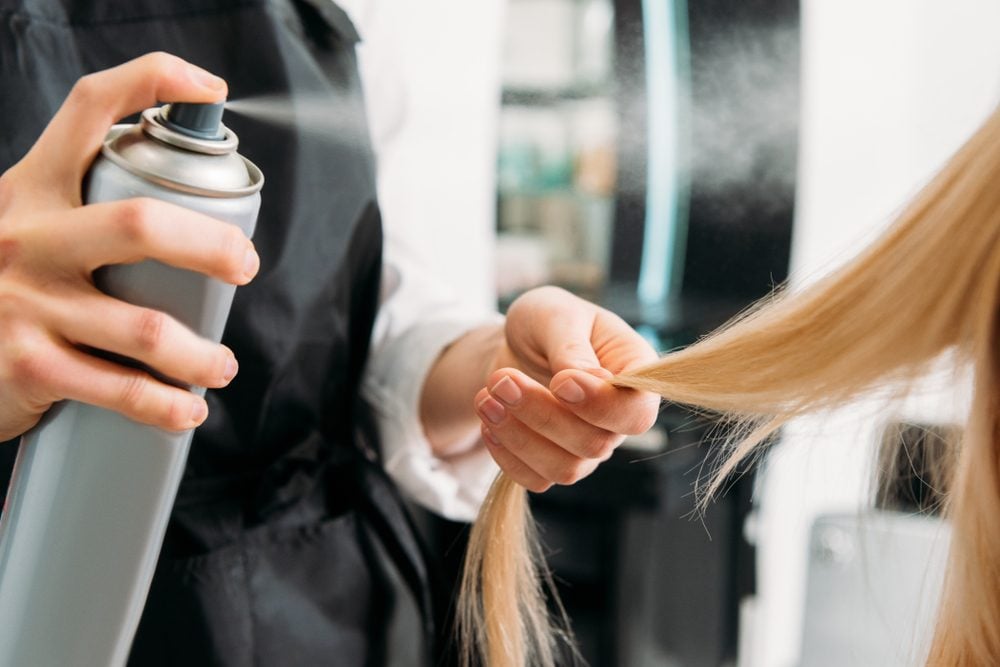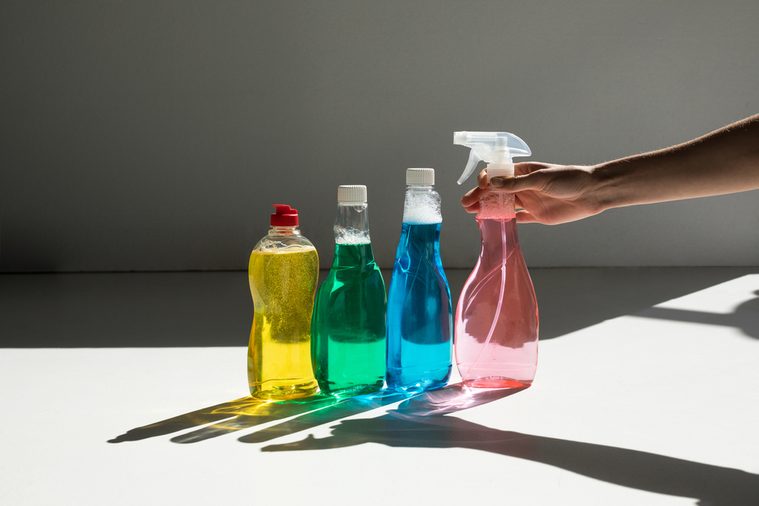
Beware of obesogens
“Obesogens are chemicals that alter our body physiology such that we gain weight,” says Bruce Blumberg, PhD, professor of developmental and cell biology at the University of California, Irvine, and author of The Obesogen Effect. “Obesogens can act directly on fat cells by producing more and larger fat cells, by altering the regulation of appetite and satiety, and/or by altering metabolic set points.” Recent research presented at the European Society of Endocrinology 2018 annual meeting suggests that many common household items may be obesogenic. From food-storage containers to cookware to personal-care products and more, here are some of the obesogenic products that might be lurking in your home.

Canned food
Bisphenol A (BPA) is a chemical used in many products, including the coating on the inside of some canned goods. “BPA has been shown to cause fatty liver, as well as increased abdominal fat and glucose intolerance in animals,” says Blumberg. While many manufacturers claim to be moving away from BPA, a survey by the Environmental Working Group (EWG) found that only a small group of companies that sell BPA-free cans disclose what they’re actually using instead—and some replacements aren’t necessarily better, says Blumberg. “Early studies show that replacement chemicals, such as BPF and BPS, have the same activity as BPA,” he explains. “Thus, the label ‘BPA-free’ has little meaning.” Discussion of BPA as an obesogen has been controversial, and the Centers for Disease Control and Prevention (CDC) states that more research is needed to understand the effects of exposure to it. However, in a recent review study, scientists note that growing evidence exists to connect exposure to BPA with a heightened risk of obesity. Learn more about BPA and BPS here.

Hard plastic water bottles
Although less common nowadays, you may still find sports water bottles that contain BPA. When the container is worn, scratched, or heated, more BPA may make its way into a beverage, cautions Consumers Union. Get the scoop on how you can avoid BPA in your food.

Perfume
Another commonly found obesogen is diethyl phthalate (DEP), often used in perfumes. Although the U.S. Food & Drug Administration (FDA) notes that DEP is safe to use in cosmetic products, you may decide for yourself if you want to cut down on this particular exposure. A study in Pediatric Research shows that exposure to DEP while in utero may be connected with a heightened risk of obesity later in adulthood. Here are 11 more toxic ingredients that turn up in beauty products.
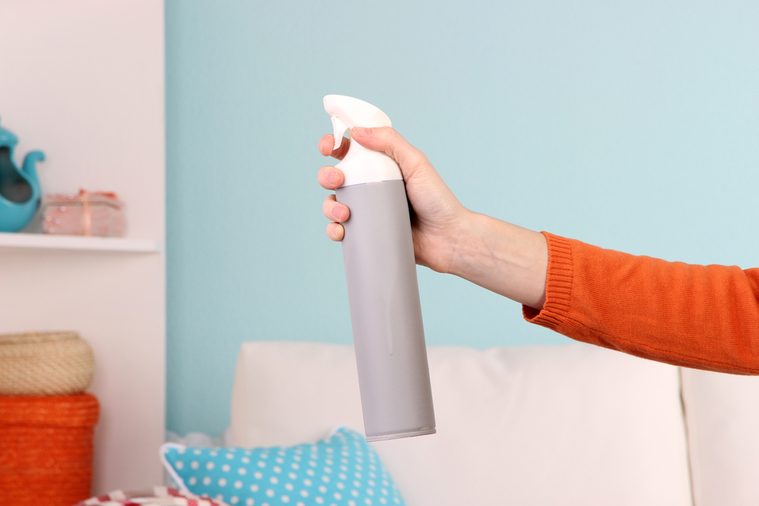
Air freshener
While they may smell delightful, air fresheners can also contain DEP: “Some phthalates have been classified as carcinogens and have been shown to be obesogenic in animal studies and linked with obesity in humans,” says Blumberg. “Some phthalates interfere with the normal action of hormone receptors, such as the estrogen and testosterone receptor, and also interfere with fatty acid receptors.”

Non-stick cookware
Perfluoroalkyl substances (PFAs) are another thing to look out for, and they’re common in certain non-stick cookware.”These chemicals have been associated with a wide variety of adverse health effects, including obesity,” says Blumberg. Stainless steel and cast iron pots and pans don’t hold the same risk. See the 10 sneaky ways your house could be making you gain weight.

Leather
In a study by German researchers, leather samples were found to contain high levels of PFAs. “Most recently, groups at Harvard, Louisiana State University, [and Tulane University] showed that people with the highest levels of PFAs in their blood gained weight back the quickest after dieting and had the lowest resting metabolic rate, the number of calories your body needs to sustain itself,” says Blumberg. “Since the majority of calories we burn every day are to support resting metabolic rate, this has a big effect on weight gain.”
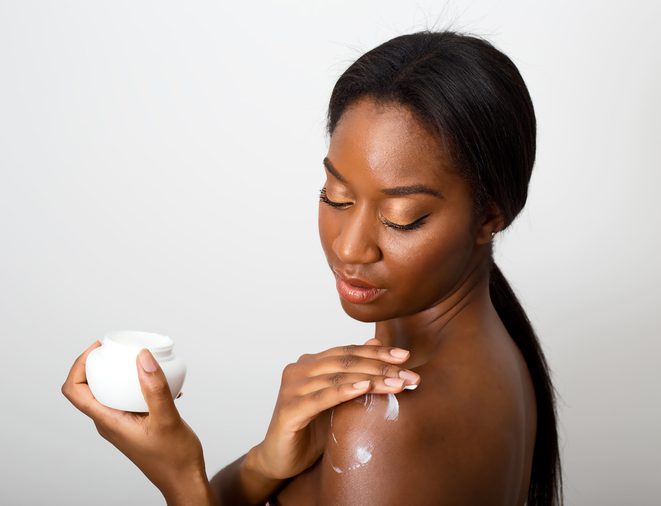
Body lotion
“Parabens are a class of obesogens known to disrupt hormones by mimicking estrogen,” says Blumberg. “They are used as preservatives in many personal care and beauty products. Most are known or suspected obesogens.” You may find parabens in moisturizers, according to the FDA. Wondering if a product you use contains parabens or another obesogen? Search for it in the EWG’s Skin Deep Cosmetic Database.
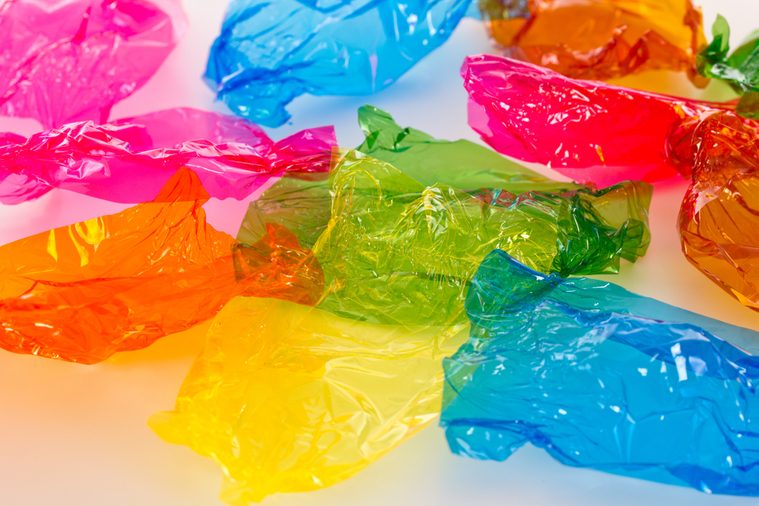
Food wrappers
Certain food packaging, such as some bread wrappers, dessert wrappers, and paperboard containers (like those that may be used to hold fries) contain PFAs, per research in Environmental Science & Technology Letters. These containers are often used to hold fast-food items, and some baking-manufacturing papers and wrappers may contain levels of PFA precursor substances like FTOH, per a study by German researchers.

Tap water
BPA can make its way into tap water, which is a good reason to filter your water before you pour it into a drinking glass. How does BPA reach your water? The chemical can be released by the epoxy resin that lines some pipes, according to a study published in Fundamental & Clinical Pharmacology. Check out the 17 things you need to know about your tap water.

Shaving cream
Shaving cream or foam is another category of products that may contain parabens. When you apply shaving cream to your skin, you may absorb parabens, according to the CDC. Beware of aftershave lotions, too, as they may contain phthalates, reports the FDA. Get the scoop on 12 toxic ingredients most commonly found in self-care products.
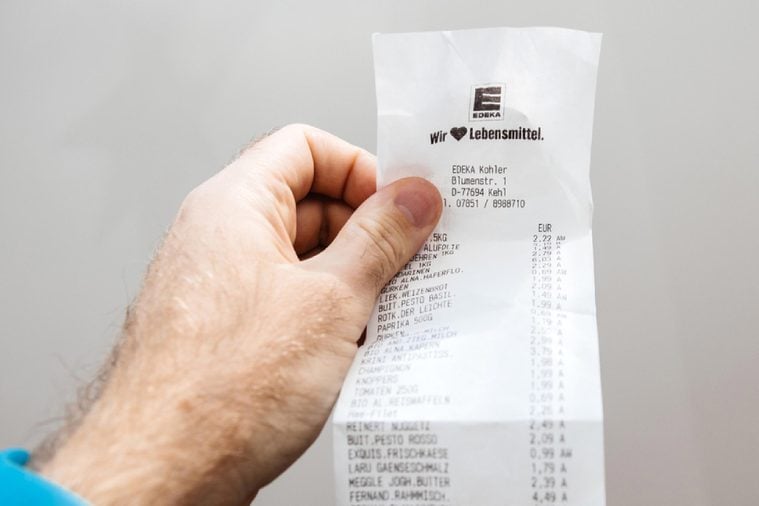
Cash register receipts
Think twice about saving paper receipts—and consider instead scanning them into a digital version. Cash register receipts are typically printed on thermal paper, which is specially treated to change color upon exposure to heat. This paper may contain BPA. Here are 11 more subtle ways your house could be harboring things that make you sick.
Styling products
Yup, your favorite hairspray or styling gel may contain DEP. When the FDA conducted a survey of common cosmetics, including hair-care products, it found that eight out of 17 styling products surveyed contained DEP.

